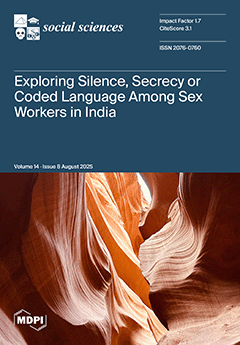Open AccessArticle
State-by-State Review: The Spread of Law Enforcement Accountability Policies
by
Hossein Zare, Danielle R. Gilmore, Khushbu Balsara, Celina Renee Pargas, Rebecca Valek, Andrea N. Ponce, Niloufar Masoudi, Michelle Spencer, Tatiana Y. Warren and Cassandra Crifasi
Viewed by 3887
Abstract
Purpose: Following George Floyd’s death, the push for law enforcement accountability policies has intensified. Despite robust legislative action, challenges in enacting and implementing meaningful reforms persist. This study analyzes police accountability policies (PAP) in the U.S. from 2020 to 2022, identifying barriers and
[...] Read more.
Purpose: Following George Floyd’s death, the push for law enforcement accountability policies has intensified. Despite robust legislative action, challenges in enacting and implementing meaningful reforms persist. This study analyzes police accountability policies (PAP) in the U.S. from 2020 to 2022, identifying barriers and facilitators through expert perspectives in enforcement oversight, policy advocacy, and community engagement. Methods: The study used a dual approach: analyzing 226 police accountability bills from all 50 U.S. states, D.C., and Puerto Rico via the National Conference of State Legislatures database, and categorizing them into six key areas such as training, technology use, and certification. Additionally, a survey was conducted among experts to identify the challenges and drivers in passing police accountability legislation. Findings: A legislative analysis showed that although 35 states passed police accountability laws, California, New Jersey, Oklahoma, and Colorado have made significant strides by passing multiple pieces of legislation aimed at enhancing law enforcement accountability and ensuring better policing practices. The most common policies focused on training and technology, enacted by 16 and 12 states, respectively. However, crucial certification and decertification policies were adopted in just 13 states, highlighting the inconsistent implementation of measures critical for police accountability and transparency. The survey identified several barriers to passing PAP, including inadequate support from local governments (72.7%). Structural exclusion of poor and minority communities from policing resources was also a significant barrier (54.5%). Facilitators included community support (81.8%) and a cultural shift in policing towards viewing officers as “guardians” rather than “warriors” (63.6%). Conclusions: While some progress has been made in passing PAP, considerable gaps remain, particularly in enforcement and comprehensive reform. Resistance from law enforcement institutions, lack of community support, and structural inequalities continue to impede the adoption of effective PAP.
Full article





